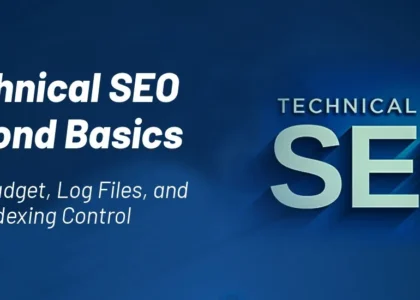As websites increasingly serve international audiences, optimizing content for global visibility becomes more important than ever. While most digital marketers focus on multilingual content and hreflang tags, Multilingual Image SEO is often overlooked. However, images are a crucial part of search, user experience, and traffic generation — especially through Google Images and visual search features.
In this guide, we’ll break down what multilingual image SEO is, why it matters, and how to implement it effectively. Whether you’re a small business owner, SEO practitioner, or marketer managing a global website, this post will help you leverage international SEO for images to attract and engage a global audience.
What Is Multilingual Image SEO?
Multilingual Image SEO refers to the process of optimizing images on a website so that they rank well in different languages and regions. It involves tailoring image metadata, file names, alt text, and structured data based on the target language and location of your users.
Key elements include:
- Using localized image file names (e.g., chaussures-rouges.jpg for French users).
- Writing alt text in the local language.
- Hosting images on localized versions of pages (like /fr/, /es/, or subdomains).
- Using language-specific structured data.
- Ensuring image sitemaps reflect multilingual versions.
In short, multilingual image SEO is an extension of both image SEO and international SEO, customized to help images rank better in region-specific and language-specific search results.
Why Is It Important for Global Search?
Search engines like Google and Bing use images as a ranking factor not just for text-based searches, but also for visual and mobile search. Ignoring multilingual image optimization means missing out on global traffic opportunities.
Here’s why it matters:
- Enhanced discoverability: Localized image content can show up in region-specific image search results.
- Improved UX: Language-specific alt text improves accessibility and relevance.
- SEO synergy: Multilingual image SEO complements your broader international SEO strategy.
- Visual search growth: With the rise of Google Lens and Pinterest Lens, optimizing visuals for language relevance is crucial.
Higher engagement: Visitors are more likely to engage with visuals they understand contextually.
Best Practices for Implementing Multilingual Image SEO
Let’s dive into actionable steps to implement multilingual image SEO correctly:
1. Use Language-Specific File Names
Instead of product123.jpg, use camiseta-blanca.jpg for Spanish and white-shirt.jpg for English. File names should reflect both the image content and the target language.
2. Localize Alt Text and Captions
Alt text should not only describe the image but do so in the correct language. This helps with screen readers, accessibility, and image indexing.
Example:
- English: “Red sneakers on a white background”
- German: “Rote Turnschuhe auf weißem Hintergrund”
3. Serve Images Through Localized URLs
Images should be hosted under the correct language folder or subdomain. For example:
- example.com/en/images/red-shoes.jpg
- example.com/de/images/rote-schuhe.jpg
This helps Google understand which image belongs to which version of your site.
4. Implement hreflang Tags for Image Pages
If you have dedicated image pages or galleries, apply hreflang tags just like you would for regular content pages.
5. Use Language-Specific Structured Data
Use schema.org markup in the target language. For example, use Image Object or Product schema with translated descriptions and titles.
6. Optimize Image Sitemaps for Multilingual Contexts
Include localized image URLs in your XML sitemaps and reference language-specific image data.
How It Aligns with Overall International SEO Strategy
Multilingual Image SEO is not a separate tactic — it fits naturally into your broader international SEO framework.
- Consistency: Just like content, images must be consistent with the page language.
- Localized Experience: It ensures that users from different regions get relevant visuals.
- Geo-targeting: Helps improve local SEO signals when combined with localized text and metadata.
- Better Crawling and Indexing: Search engines understand and categorize your multilingual assets better.
When images are optimized in line with the region and language of the page, they help boost page-level authority and user trust.
Tools and Techniques for Multilingual Image SEO
Here are some tools and techniques to implement and audit your multilingual image optimization:
Tools
- Google Search Console – Check image indexing and performance per region.
- Screaming Frog – Audit image alt text, file names, and URLs.
- Ahrefs / SEMrush – Track keyword rankings for localized image searches.
- ImageKit / Cloudinary – Deliver optimized and language-targeted images.
- Weglot / WPML – For WordPress sites, use translation plugins that support image translation and localization.
Techniques
- Use CDN routing to serve region-specific images.
- Leverage lazy loading and compression for better performance.
- Track engagement (e.g., click-throughs from Google Images by region).
- Manually test how your images rank in different regions using VPNs or location-based search tools.
Common Mistakes to Avoid
Avoid these pitfalls to ensure your multilingual image SEO efforts succeed:
- Using the same image and alt text across all language versions
- Not translating image file names or captions
- Skipping hreflang for image-heavy pages
- Overlooking image sitemaps in your international SEO plan
- Serving images from a single central domain only
Each of these mistakes can lead to missed ranking opportunities or even duplicate content issues.
Conclusion
Multilingual Image SEO is a powerful yet underutilized strategy within international SEO. As global search behavior shifts towards visual and mobile-first experiences, images that speak the user’s language can make a real difference.
By using localized file names, alt text, URLs, and structured data — and aligning your images with your international SEO strategy — you’ll enhance visibility, accessibility, and engagement.
Start optimizing your image assets today to ensure your brand speaks visually to every audience, everywhere.





